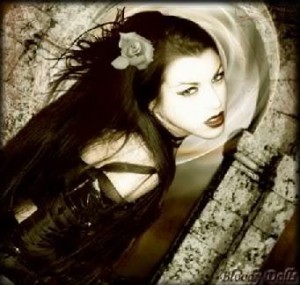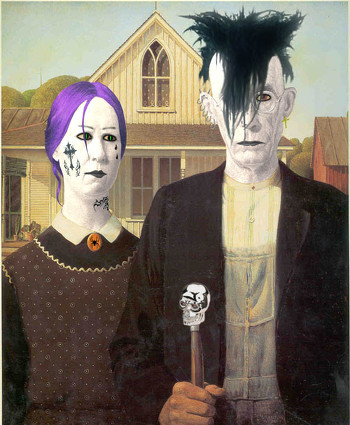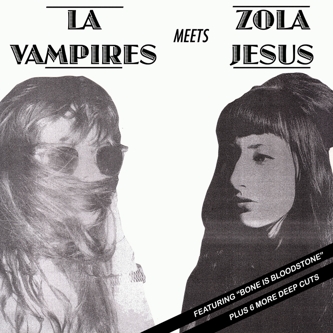I’ve previously written about my teenage years hanging around with goths in St Albans:
In mid eighties suburban Hertfordshire, goth was pretty good lowest common denominator “alternative” fodder. Black clothes were de rigeur anyway and we tended to huddle together with the other weirdos to avoid violence from people who took exception to our appearance.
Plus, let’s be completely honest, hanging around in a pub for some underage drinking with some impossibly foxy goth girls was a lot more interesting than sitting alone in your bedroom again listening to Foetus and reading William Burroughs.
So I was interested to see Kiran Sande’s 20 Best Goth feature over at FACT Magazine. The inevitable, and planned, reaction to these lists is to get people up in arms about what has been left out – this was as true of Droid’s fantastic 20 Best Ragga feature as of the current one.
But what differentiates goth from other genres is its high level of fuzziness. There are relatively few arguments about what is or isn’t reggae, or who is or is not a reggae fan. But whilst everyone knows what a goth is, very few people in its eighties heydey admitted to being one, least of all the people in the bands. This game of goth accusation and denial even afflicts middle aged men who are succesful dubstep producers.
This adds a certain complexity to the historification process, which is already fraught with issues such as the tension between recording what was popular at the time and what went on to be influential. And of course the personal credibility of the author.
The FACT piece is clear from the outset that it cannot be a history of what was popular with goths (not least because of the author’s youthfulness). Comrade Stagger Lee’s response to the FACT article includes some great personal history, a mix and some good examples of omissions.
That isn’t a bad dialectic right there, which is a fancy way of saying that these two have done most of the work. All that remains is for me to introduce some wildcards and argue the toss!
I carried on hanging around with goths when I moved to London in 1988. Indeed, I lived with someone who had been in a very early incarnation of goth thrashers Creaming Jesus. There were a few clubs a bunch of us went to like KitKat, Friday nights at the Electric Ballroom (was that called “Full Tilt”?), Tuesdays at the Camden Palace (Feet First) and even a Saturday night bash in the club above the Manor House pub, by the tube station of the same name. There was also the Slimelight, but I think that came later when my interest had properly waned.
These nights all had the advantage of being really cheap to get into and filled with attractive goth girls. They were also a right good laugh – something that people with no first hand knowledge of gothdom may not realise.
Both FACT and Lee’s lists miss out these three tunes. All of which were surefire goth dancefloor fillers. You could also probably expect to hear a blast of PIL’s “Rise” and Front 242 and Nitzer Ebb were also de rigeur, soon to be joined by virtually anything off the first Nine Inch Nails album. And late period Siouxise and the Banshees (“Wheels on Fire”, “Peekaboo” etc). And yes, “Cat House” and “Big Hollow Man” by the legend which is Danielle Dax.
What I like about the tunes listed above is that people avoid them like the plague now – they can’t be cited as influential or hip. But they were huge tracks which people danced to week after week in the late eighties and early nineties. I suspect they still get played at goth clubs now, somewhere.
Perhaps I remembered them as being better than they actually are in the cold light of day in 2010. In fact, a good few of them sound a bit leaden and overproduced in that eighties way. But they do catapult me back to dark clubs, ripped to the gills at the age of 19/20. Which I think makes them important, and valuable – to me at least.
I suppose what I’m saying is that writing about classic music is well and good, but writing about the history of subcultures can’t be done by just selecting the best bits – any more than a “greatest hits” compilation can truly represent an artist.
Martin has also contributed to the discussion with an excellent post over at Beyond the Implode. His piece combines some great anecdotes with some good musical selection and is much funnier (intentionally!) than me wittering on like an old fart here.
Loki brings things up to date with a look at Zola Jesus over at An Idiot’s Guide to Dreaming. I first heard them on Boomkat’s psyche-dub “14 tracks” compilation. Their collab with LA Vampires was a standout track for me and whilst the own efforts are much less dubby, they are significantly more goth – a definitely worth investigating.
ZJ are also flagged up in the FACT feature as being a current incarnation of goth. It’s easy to argue for a goth continuum:
- Siouxsie
- Bauhaus
- Sisters of Mercy
- Sisters clones like the youtube vids above
- Nine Inch Nails
- Placebo
- Marilyn Manson
- emo?!
- The Horrors etc
- Lady Gaga
- Zola Jesus
That’s just off the top of my head – to pursue the idea we would need to demonstrate connections between each stage and fill the gaps. I’m not really interested in doing that. Possibly the list is total bollocks anyway, but you see what I’m getting at.
What I am interested in is whether the resurgence of goth now has parallels with the economic and cultural conditions in the early eighties.
Is it a miserablist escapism – a way of internalising uncertainty about the future? Or simply an amplification or adolescent emotional intensity? Or both?
Do people turn back to artiness in times of austerity because they have lots of time on their hands, or because they are seeking something greater than trying to make ends meet?
It’s not time for me to get the pointy boots out again, but I’ll be keeping an eye on things with some interest.




Pingback: TWEETS THAT MENTION UNCARVED.ORG BLOG » BLOG ARCHIVE » THE HISTORIFICATION OF “GOTH” -- TOPSY.COM
Yeah, good call on “Peek A Boo” – that was played without fail. “Juju”‘s OK, but that was more of a ‘lying in the bath on Sunday night, staring at the tiles’ album than a source of any goth club anthems.
Pingback: HALVARD HALVORSEN’S TUMBLELOG » DAILY DIGEST FOR SEPTEMBER 30TH
“There are relatively few arguments about what is or isn’t reggae,”
Really?
Anyway, this was an amuzing trip down memory lane what with those 80s club hits, my 25+ year dislike for NiN and rememberances of goth chickies past.
*Relatively* few arguments! I think with reggae it just boils down to a dislike for dancehall or the boundary between things like UK Dub and techno.
Glad you liked it!
Aside from roots vs dancehall, what about all the crossover and pop “roots” tunes? Enough argument there to fill a volume of Talmud.
Pingback: UNCARVED.ORG BLOG » BLOG ARCHIVE » GRACELESS: A JOURNAL OF THE RADICAL GOTHIC